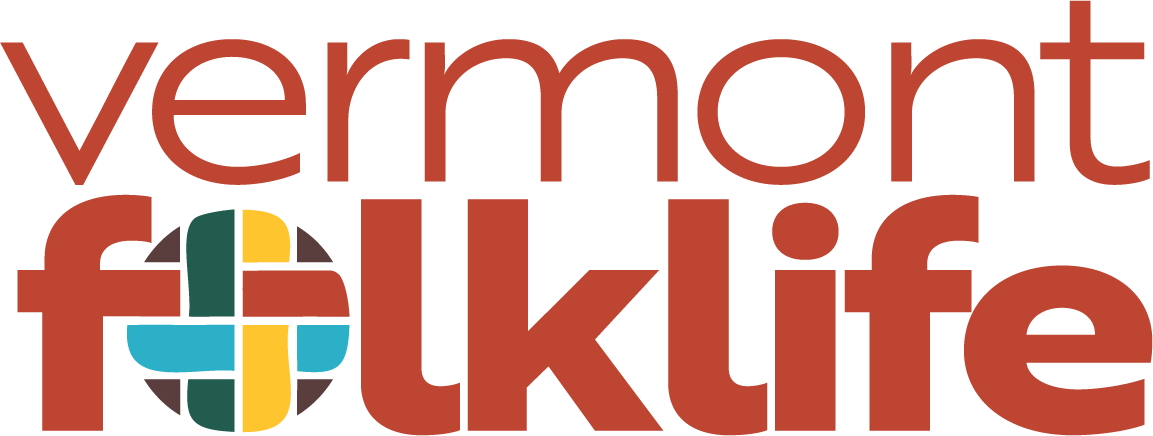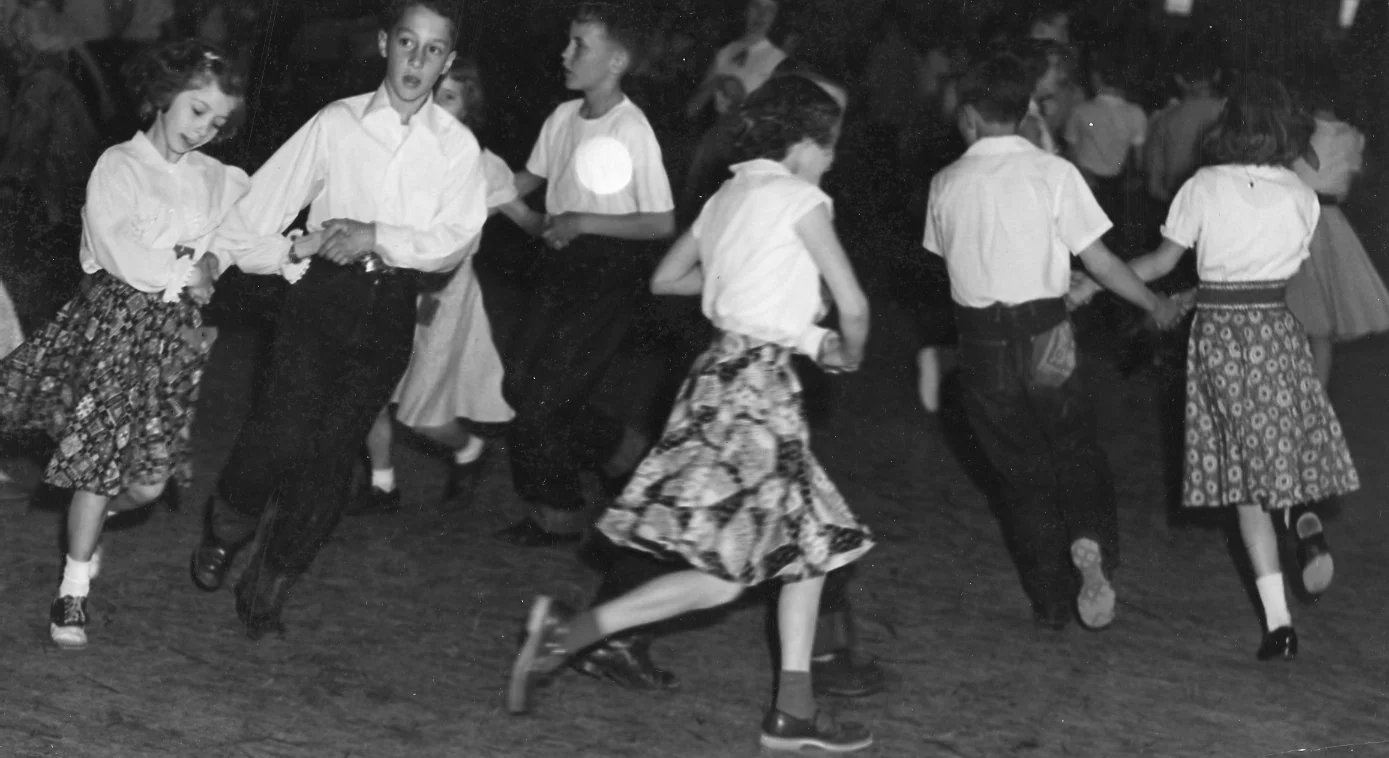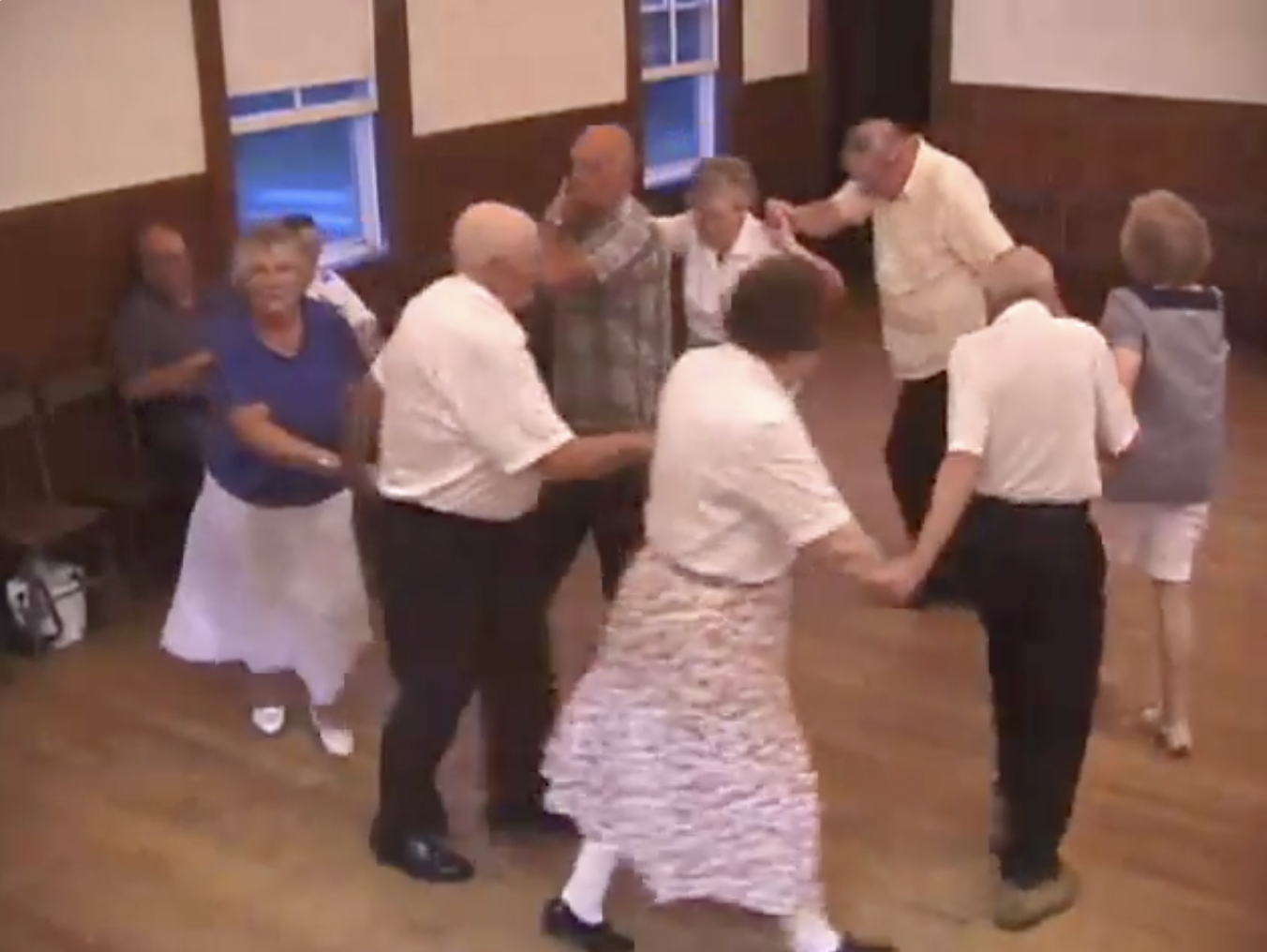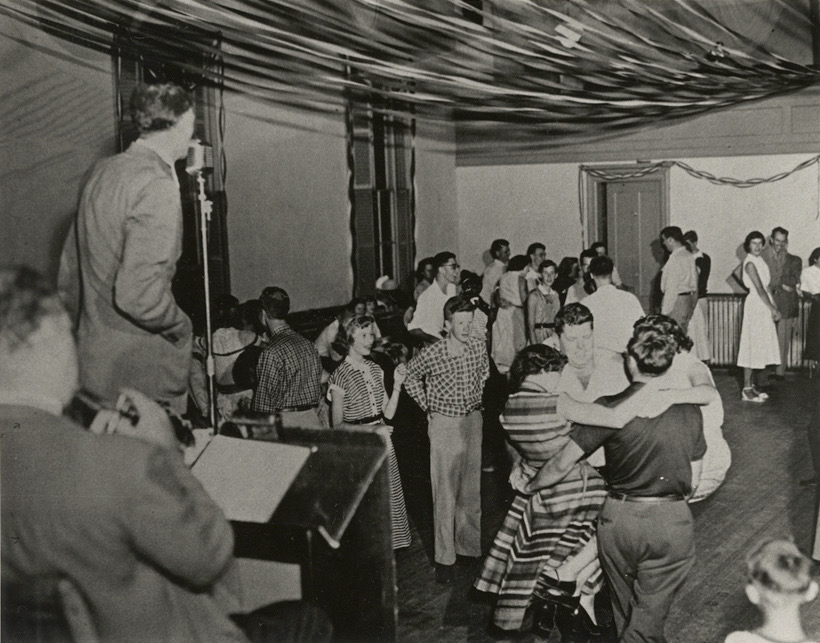Square Dance at the Fair…and in the Archives!
A Record Breaking Event?
On Tuesday, August 26th at the Champlain Valley Fair, Vermont Folklife’s own Mary Wesley will be calling a square dance for the masses in an attempt to break the standing Guinness Book’s record for the world’s largest square dance. Mary? Well, by day Mary is our Director of Education and Media, but in her other life she’s an internationally recognized dance caller for contra, square, and balfolk dance.
Will we set a new record in Vermont? Maybe!!?!!??! Will it be loads of fun regardless? FOR SURE! The current record stands at just over 1,600 people, and the dance floor at the Champlain Valley Expo can hold twice that! Our plan? To fill it!!
This record breaking event is a benefit for NOFA-VT (Northeast Organic Farming Association of Vermont) and is coordinated by Burlington-based musician Bob Wagner with Phish’s WaterWheel Foundation. Ben & Jerry’s also sponsors the event, and will offer commemorative bandannas to all participating dancers. WaterWheel has organized other record breaking events in the past including the “World's Largest Cowbell Ensemble,” on April 14, 2012 in celebration of the 15th anniversary of Ben & Jerry's Phish Food ice cream and to raise money for the Foundation's Vermont Flood Recovery Fund.
The group holding the current Guinness square dance record,” David explained, “follows in the footsteps of the huge numbers at the Santa Monica event 75 years ago. This is a style of square dance that developed after World War II and is generally called modern squares or club squares.” Traditional square dances, the style that Mary will be calling at the Champlain Fair, are built on a relatively small number of basic figures. Dances are typically “walked through” or explained beforehand so dancers know what to expect. Because of those explanations, people with no prior experience can participate. Modern squares, in contrast, use a much larger vocabulary of figures and require dancers to go through weeks of lessons to learn how to respond to those calls.
~ David Millstone
Square Dance?
Square dancing is a natural choice for an event seeking to draw a crowd and help them connect with music and with each other. It’s also a dance style that came to North America with European colonizers, and has been present in Vermont since settlers first arrived here. In his book Hoedowns, Reels, and Frolics, Phil Jamison surveys the evolution of dance forms such as square dancing and step dance commonly associated with the Appalachian region, describing them not as “the unaltered jigs and reels of the early British settlers, but hybrids that developed over time by adopting and incorporating elements from other popular forms.” Jamison traces the forms “from their European, African American, and Native American roots to the modern day,” a time when square dancing continues to be a living tradition present in urban and rural settings across the country.
The current Guinness record of 1,632 participants was achieved by the attendees of the 66th National Square Dance Convention (USA) in Cincinnati on 24 June 2017. However, social dance historian (and long-time friend of VT Folklife) David Millstone notes that the Guinness record-making-machinery wasn't around in 1950 when over 15k people filled the streets with squares in Santa Monica, CA!!
The Square Dance History Project
David is the founder and curator of the Square Dance History Project (SDHP), an extraordinary online digital library created to address the unique challenges of documenting intangible cultural heritage such as dance.
From the Project’s introduction:
Despite its popularity, the history of square dance has not been well documented. Scores of books explain specific figures and calls, but there are few current sources that offer a detailed discussion of the development of this form of American social dance.
Furthermore, there is an inherent limitation in using words to describe an activity that is rooted in music and motion; few available films illustrate the different styles of dancing that have developed over time and in different locales. The irony is that this very popularity helps explain the dearth of film documentation. "It was just something we all did," said one active dancer. "Why would we take movies of something so ordinary?"
The Project is still actively seeking out material in archives, libraries, and museum collections along with crowd-sourcing video and audio recordings, photographs, and other sources to furnish the “digital home” of North American Square Dance History.
In honor of the big event at the Fair this month we asked David to highlight a few items from the SDHP collection that relate to Vermont:
Photographs of school groups participating in the big square dance festivals held in Vermont in the 1950s in Northfield and Montpelier.
Traditional singing square dance, recorded in West Newbury, VT, on July 24, 2010. The caller and fiddler is Adam Boyce, accompanied by Donna Weston. Adam follows in the footsteps of Chelsea fiddler and caller Harold Luce, who learned from famed Vermont fiddler and caller, Ed Larkin, born in 1860s.
Square Dance in the Vermont Folklife Archive
Some of the items in the SDHP collection related to Vermont, like this interview excerpt of the aforementioned Harold Luce, “First Two Gents Cross Over - Harold Luce,” are also part of the Vermont Folklife Archive. The upcoming event inspired us to delve further into our collections as well, and feature a few items that illuminate the presence of square dance and social dancing in the state:
The Steve Green Collection - Contra and Square Dance Flyers and Posters
This collection of flyers and posters dating from the late 1970s and early 1980s collected by ethnomusicologist and archivist Steve Green when he lived in southeastern Vermont show a range of square dance and other events happening around the state. Click the images to view the full archival records.
John C. Stone Collection - The Dick Perry Orchestra
Image courtesy of Steve Green.
In 2012, John Stone donated a reel-to-reel tape recording of a Newfane, VT square dance he made in 1954 to the Vermont Folklife Archive. About the dance, John remarked:
At the time it was spectacular, and the choice of dances used by the band (Dick Perry's Orchestra with Ira Huntley, caller) was superb in my view. I had grown up square dancing in the '40s in Greensboro , Vermont and these dances were as good as I had heard. Later I square danced in Wyoming in the late 1950s, at that was a whole 'nother ball game. It was big time out there, where the Vermont scene was strictly local and low key or down to earth.
As the recording (and photograph) reveal, the Dick Perry Orchestra was not necessarily the kind of band stereotypically associated with square dancing today, but back in the day, bands like the Dick Perry Orchestra played for ballroom dances, square dances, you name it–whatever got people out on the floor!
Mad River Valley Collection - Floyd Fuller on Kitchen Junkets
As a last example, square dancing could also happen right at home! In this interview with Vermont farmer and musician Floyd Fuller of Randolph, VT recorded in 1989, Floyd describes a social dance in the kitchen, otherwise known as a “junket.”
-
Floyd Fuller: Of course, back in the old days, that was one of the things they used to entertain themselves in the winter. They called them kitchen junkets. I taught myself to play the violin, and so I used to play for those dances. In the winter, most every Friday night, unless it was big snow storm, traveling ??? some of the neighbors through Warren out into Waitsfield and Waitsfield Common would have a dance, Friday night.
And they hired me, and there was a lady, Mrs. Bashaw, she used to go with me. And she played the organ, the piano, whatever the farmer had in the house, and I played the violin. And they'd move all the furniture out of the dining room and living room and everything, and put it in the hall and in a bedroom or something, and clear out the place. And we'd start dancing at 9 o'clock, and then around 11 o' clock, and stop and have a lunch. All the farmers in the fall would bring in pumpkin pie and cider and donuts, and always have a good feed--have about a half an hour break for lunch and then we'd go play and we'd play till one o'clock.
And many times before one o clock, if people were having such a good time, they'd pass the hat around and pick up a little money and dump it on top of the organ and the piano and say, "Will you play another hour?" And we'd play 'til two. And then occasionally they would all do a few and they'd pass it again and we played till three o' clock in the morning.
And then we was maybe our in Waitsfield Common maybe 10, 11 miles from home with a horse and sleigh and zero [degrees] or more to drive home and get home in the morning at 4: 30 and dad and my brother would be going to barn milking and I'd change my clothes and go to barn, go to milking, and don't go to bed 't'all.
And we got a dollar and a half for playing...at the price of the dollar and half playing from nine to one, each one of us. And with the tips, sometimes we used to get... $2.50, $2.65 and sometimes $2.75 cents a piece and we thought we was making money.~Floyd Fuller, 1989
Floyd Fuller (Photo by Jane Beck)









